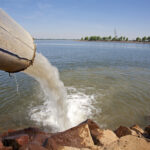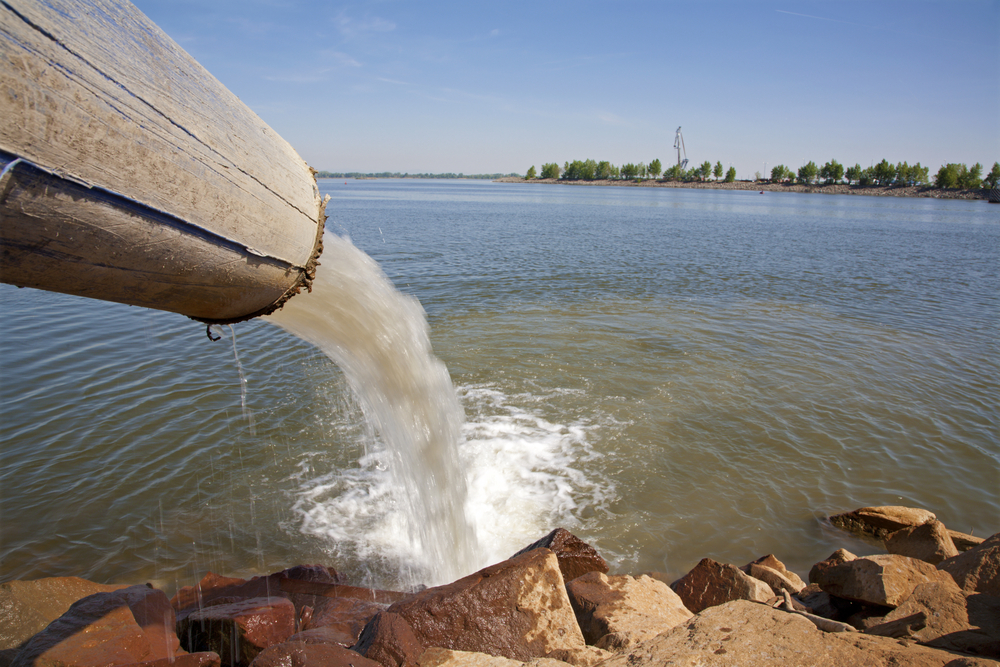The Initial Discovery and Public Notification
The saga of Camp Lejeune’s water contamination began quietly, with the initial discovery going largely unnoticed by the public. It wasn’t until years later that the magnitude of the crisis would come to light, revealing a disturbing history of toxic exposure. The water supply at the Marine Corps base in North Carolina was found to be tainted with hazardous chemicals, including trichloroethylene (TCE), perchloroethylene (PCE), benzene, and vinyl chloride.
The notification process to the public and those affected was fraught with delays and lack of transparency. Key steps in the unfolding of this crisis included:
- Identification of the contaminants in the water supply
- Internal reviews and discussions within military and government agencies
- Gradual release of information to service members and their families
- Initial public reporting and media coverage
Despite the eventual public notification, many argue that the response was too slow, leaving veterans and their families exposed to the contaminated water for far too long. The Camp Lejeune Water Contamination Lawsuit underscores the severity of the situation, with thousands affected by the toxic chemicals over a period spanning from 1953 to 1987. The legal actions taken, health effects suffered, and the government’s responses are now well-documented, with the PACT Act providing a path for compensation.
Extent of Chemical Exposure and Affected Areas
The water crisis at Camp Lejeune exposed military personnel, their families, and civilian workers to a range of harmful chemicals over several decades. The extent of the contamination was vast, affecting multiple water supply systems across the base. Key areas impacted included:
- Hadnot Point, where volatile organic compounds (VOCs) such as trichloroethylene (TCE) and perchloroethylene (PCE) were detected at levels far exceeding safety standards.
- Tarawa Terrace, affected by perchloroethylene (PCE) due to improper waste disposal practices by an off-base dry cleaning firm.
- Holcomb Boulevard, which also showed contamination with benzene and other chemicals, posing additional health risks.
The geographic spread of the contamination made it difficult to immediately grasp the full scope of the crisis. Over time, it became clear that the water systems had been compromised for years, leading to prolonged exposure for thousands of individuals. The chemicals found in the water were linked to various health issues, ranging from minor ailments to serious diseases, including cancer. As the community grappled with the magnitude of the situation, the need for a comprehensive response became evident, setting the stage for a protracted battle for accountability and support.
Health Impacts on Veterans and Their Families
The water crisis at Camp Lejeune has left a lasting legacy of health complications for veterans and their families. Prolonged exposure to the contaminated water has been linked to a range of serious illnesses, including various forms of cancer, birth defects, and neurobehavioral effects. The gravity of the situation is underscored by the stories of those who served at the base and their loved ones, many of whom are still grappling with the consequences of the toxic exposure.
- Cancer: Numerous veterans and family members have developed different types of cancer, some of which are rare and difficult to treat.
- Birth Defects: Children born to parents who were exposed to the contaminated water have experienced a higher incidence of birth defects, impacting their health and development.
- Neurobehavioral Effects: There have been reports of veterans and their families suffering from neurobehavioral problems, which can range from mild cognitive impairments to severe neurological disorders.
The health impacts extend beyond physical ailments, with many veterans facing mental health struggles as they cope with their illnesses and the illnesses of family members. The community’s response, including support initiatives and advocacy for better healthcare, has been a critical lifeline for those affected. However, the fight for adequate healthcare coverage and benefits continues, as many veterans find themselves navigating a complex and often frustrating bureaucratic system.
Voices from the Shadows: Personal Accounts of the Crisis
Marine Veterans Share Their Stories
The personal accounts of Marine veterans who served at Camp Lejeune paint a vivid picture of the struggles faced due to the water contamination crisis. Joe Reed, a former Elkhart Police Officer and Marine veteran, represents the resilience and ongoing challenges of those affected. Despite his injuries, Reed remains an active community member, volunteering and enjoying time with his family, showcasing the indomitable spirit of the veterans.
Organizations like OP1VET are stepping in to provide support, offering life-changing equipment such as the Action Trackchair to veterans like Reed. These gestures, while significant, underscore the broader need for systemic support and recognition of the hardships endured by the Camp Lejeune community.
- Veterans and their families are now navigating new legal landscapes to seek justice and compensation.
- Community support initiatives are vital in providing immediate relief and assistance.
- The fight for recognition and proper healthcare continues, with many veterans still in shock over the events that unfolded and the support they are now receiving.
Families Confront Health Challenges
The water crisis at Camp Lejeune has left a lasting impact on the families of those who served on the base. Many have faced a range of health issues, some of which have been severe and life-altering. The toxic exposure has been linked to various conditions, including cancers, birth defects, and other chronic diseases.
- The struggle for a proper diagnosis and the associated costs of medical care have added to the families’ burdens.
- Emotional and psychological tolls are often overlooked, but they are just as significant, with many families experiencing stress and anxiety over their health and financial future.
- Children of veterans have been particularly vulnerable, with some suffering from conditions that will affect them for the rest of their lives.
Despite these challenges, families continue to fight for recognition and support. They seek not only medical assistance but also a sense of justice for the harm that has been done. The community’s resilience is evident as they band together to share resources and provide mutual support.
Community Response and Support Initiatives
In the wake of the water crisis at Camp Lejeune, the community’s response has been a testament to resilience and solidarity. Various initiatives have been established to support those affected by the contamination, with organizations and individuals coming together to provide aid and resources.
- Veterans Resource Center Initiatives: The Veterans Resource Center has been instrumental in offering support, launching programs such as veterans-specific campus orientations and peer mentorship. They have also invested in technology and resources to assist veterans in their educational and career pursuits.
- Abby’s House Projects: Abby’s House has taken a proactive role in addressing interpersonal violence, which has been a concern in the aftermath of the crisis. Their efforts include educational programs and resources to promote equity and non-violence within the community.
- WAIV Committee’s Strategic Plan: The Wolves Against Interpersonal Violence Committee (WAIV) has been at the forefront of creating a coordinated community response. Their strategic plan includes prevention education and the establishment of external partnerships to address societal issues more effectively.
These initiatives not only provide immediate assistance but also aim to foster a long-term environment of support and prevention. The full-time coordinators and dedicated staff members overseeing these projects are pivotal in ensuring that the community’s response remains robust and adaptive to the evolving needs of those impacted by the Camp Lejeune water crisis.
Investigative Failures and Accountability
Delays in Addressing the Contamination
The response to the water contamination crisis at Camp Lejeune was marred by significant delays that exacerbated the plight of those affected. Initial reports of potential contamination surfaced, but it took years for comprehensive investigations to be initiated. The timeline of events reveals a troubling lag in action:
- Early concerns about water quality were met with limited and inconclusive testing.
- It was not until the mid-1980s that the gravity of the situation began to be acknowledged publicly.
- Full-scale assessments and remediation efforts were delayed, leaving residents exposed to harmful chemicals for extended periods.
The lack of urgency in addressing the contamination not only allowed the problem to persist but also cast doubt on the commitment of the responsible agencies to protect the health of military personnel and their families. This slow response has been a source of frustration and anger among those who served at Camp Lejeune, as they grapple with the long-term health consequences of their exposure.
The Role of Government Agencies
The involvement of government agencies in the Camp Lejeune water crisis has been a focal point of scrutiny and controversy. Investigations revealed a complex web of bureaucratic challenges and systemic failures that contributed to the delayed response to the contamination.
- Delayed Action: Despite early signs of water contamination, government agencies were slow to respond, leading to prolonged exposure for residents and personnel.
- Lack of Coordination: There was a notable absence of coordination between different government entities, which hindered the effectiveness of the response efforts.
- Inadequate Communication: Communication with the affected communities was often insufficient, leaving many unaware of the risks they faced.
The aftermath of the crisis saw these agencies under the microscope, with questions raised about their roles and responsibilities in safeguarding public health. The quest for accountability continues, as affected individuals and advocacy groups seek answers and justice for the harm endured.
Legal Battles and Compensation Efforts
The quest for justice for the victims of Camp Lejeune’s water crisis has been fraught with complex legal challenges. Survivors seeking compensation have had to navigate a labyrinth of legal procedures to prove the link between their illnesses and the contaminated water they were exposed to.
- Legal Guidance: For many, the process begins with seeking legal guidance to understand the intricacies of filing claims. Expert attorneys have become crucial allies in this battle, providing the necessary counsel to move forward.
- Filing Claims: The filing of claims is a multi-step process that requires meticulous documentation and adherence to strict deadlines. Survivors must gather medical records, exposure evidence, and other pertinent information to build a strong case.
- Consultation Services: To assist with these efforts, consultation services are available to provide support and answer questions. These services play a pivotal role in helping individuals understand their rights and the compensation they may be entitled to.
As the fight for accountability continues, the determination of Camp Lejeune survivors and their advocates remains unwavering. Their stories are not just a testament to their resilience but also a call to action for systemic change to prevent future tragedies.
The Ongoing Struggle for Justice and Recognition
Efforts to Raise Awareness
In the wake of the Camp Lejeune water crisis, a concerted effort to raise awareness has been paramount in the fight for justice and recognition. Survivors, advocates, and environmental groups have taken to various platforms to shed light on the severity of the contamination and its long-lasting effects.
- Public campaigns have been launched to inform the public and policymakers about the dangers of toxic exposure.
- Social media movements have gained traction, allowing for a wider dissemination of information and personal stories.
- Documentaries and news features have played a critical role in bringing national attention to the crisis.
Amidst these initiatives, it is crucial for those affected to be aware of their rights under the Camp Lejeune Justice Act, which permits individuals exposed to the contaminated water to file claims with the Department of the Navy. However, vigilance is advised to avoid falling prey to fraudulent schemes. For those seeking assistance, reliable contact information is available to guide them through the process.
Challenges in Obtaining Healthcare and Benefits
For many veterans and their families affected by the Camp Lejeune water crisis, securing adequate healthcare and benefits has been fraught with obstacles. The complexity of navigating the Department of Veterans Affairs‘ (VA) claims process often leaves individuals feeling overwhelmed and discouraged. Veterans face a daunting array of forms, evidentiary requirements, and legal hurdles that can delay or deny the critical support they need.
The struggle is compounded for those dealing with debilitating conditions linked to the toxic exposure. Many find themselves in a catch-22, where proving a direct connection between their ailment and the contaminated water is both essential and incredibly challenging. This burden of proof is a significant barrier, especially when scientific and medical consensus on the long-term effects of the contaminants is still evolving.
Advocacy groups have stepped in to provide guidance and support, but the road to justice remains long and arduous. Efforts to streamline the process and improve access to healthcare and benefits continue, with the hope that those who served their country will not be left to fight this battle alone.
Advocacy Groups and Their Role in the Fight
In the aftermath of the Camp Lejeune water crisis, advocacy groups have emerged as a powerful force in the ongoing struggle for justice and recognition. These organizations have been instrumental in amplifying the voices of those affected, providing a platform for sharing their stories, and pushing for policy changes.
Key roles of advocacy groups include:
- Raising Awareness: They work tirelessly to bring the issue to the forefront of public consciousness, ensuring that the plight of the victims is not forgotten.
- Supporting Legislation: Advocacy groups lobby for laws that provide compensation and healthcare benefits to those impacted by the contamination.
- Community Building: They foster a sense of solidarity among victims, creating networks of support and sharing resources for coping with health and legal challenges.
The collaborative efforts of these groups have not only contributed to individual support but have also influenced broader regulatory reforms. Their persistent lobbying and educational campaigns have been crucial in the fight for accountability and in the pursuit of a safer environment for future generations.
Lessons Learned: Policy Changes and Environmental Safeguards
Regulatory Reforms Post-Crisis
In the wake of the Camp Lejeune water crisis, significant regulatory reforms have been implemented to prevent such a disaster from recurring. These reforms aim to enhance the safety and quality of water provided to military personnel and their families on bases across the nation.
Key measures include:
- The establishment of stricter water testing protocols to detect contaminants early.
- The introduction of mandatory reporting guidelines for potential environmental hazards.
- The development of comprehensive emergency response plans to address contamination incidents swiftly.
These reforms represent a concerted effort to prioritize the health and well-being of military communities, ensuring that the negligence of the past does not repeat itself. The legacy of Camp Lejeune’s water crisis now serves as a cautionary tale, driving the enforcement of rigorous standards and oversight in environmental safety.
Improving Military Base Environmental Standards
In the wake of the Camp Lejeune water crisis, a critical focus has been placed on improving environmental standards across military installations. The goal is to prevent future incidents and ensure the safety and well-being of military personnel and their families.
Key initiatives include:
- Establishing centralized systems for environmental monitoring and response.
- Developing comprehensive strategies and best practices for environmental management.
- Strengthening partnerships with industry experts to leverage cutting-edge solutions.
- Enhancing the training and capacity of personnel responsible for environmental oversight.
These measures aim to create a robust framework that not only addresses current environmental concerns but also sets a precedent for the proactive management of potential hazards. The commitment to continuous improvement reflects a broader understanding of the importance of environmental stewardship within the military community.
Preventive Measures for Future Generations
In the wake of the Camp Lejeune water crisis, a critical emphasis has been placed on preventive measures to safeguard future generations from similar environmental catastrophes. These measures are multifaceted, aiming to address the shortcomings that led to the contamination and to ensure that early warning systems are in place.
Key preventive strategies include:
- Regular Monitoring and Testing: Implementing stringent monitoring of water sources on military bases to detect contaminants early.
- Environmental Education: Educating personnel and local communities about environmental stewardship and the importance of reporting potential hazards.
- Policy Overhaul: Revising and enforcing policies that govern the handling and disposal of hazardous materials to prevent contamination.
- Infrastructure Investment: Allocating funds for the upgrade and maintenance of water treatment facilities to meet or exceed safety standards.
These initiatives represent a commitment to proactive environmental management, with the goal of not only protecting the health of military personnel and their families but also preserving the integrity of the environment for years to come.











